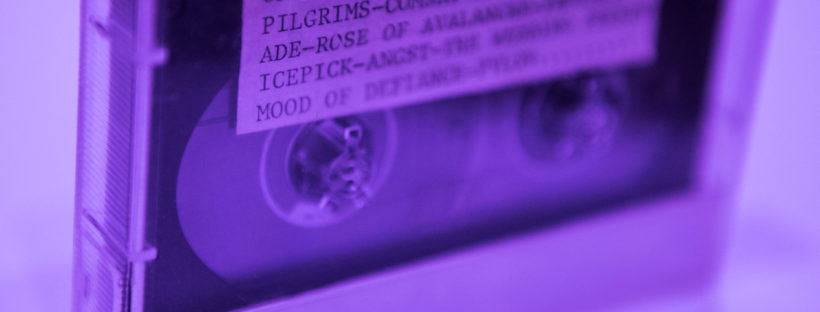In the late 1980s, there was a group of music fans who all worked in the graphics department of a regional newspaper in Maryland. They listened to tapes, traded tapes, and talked about tapes; the music was a tool of their trade as much as the graphic design equipment. When I started working on this website, my friend Dennis Kane began regaling me with stories about the graphic arts department of a newspaper and what a huge influence the mix tapes he received from coworkers there had had on his taste in music and his own eventual musicianship. One Sunday morning in late March, Dennis and Melissa Quinley and I met up with one of these mix tape makers for a reunion. As we talked, it became clear that the evolution of technology in the graphics department of this sleepy regional newspaper, from manual craftsmanship– albeit perhaps a bit muddied with youthful transgressions– to work that happens digitally and at home without the workplace community, was a perfect metaphor for the transition from mix tape culture to digital music streaming.
Sarah: I want to start by asking, when was the last time you guys actually hung out with each other before today?
Dennis: I think the last time that we hung out was when I visited [John] in Philly. But right before that, we were living together.
Sarah: And how long did you live together?
Dennis: Two years?
John: A year and a half?
Dennis: It was this debauched house.
John: It was the early- to mid-nineties, too, which was very much like, say, the early- to mid-seventies.
Dennis: Yeah. The house was pretty debauched even before John moved in. But certainly after. We’d have a lot of parties. So that’s really like the last time that we hung out.
John: Yeah, you came up to Philly a couple of times. You came up for my wedding and you came up that other time. It’d been a while. Then we saw each other for a few minutes at The Cure show last year.
Sarah: So how did you originally meet?
Dennis: For 20 years—I’ve always wanted to know John’s take on this. [laughter] Twenty years? 25 years! Well I’ll tell it from my side first.
John: Yeah, you’d better, because I’m older.
Dennis: So, I think it was my first day at the newspaper. And John’s friend was the boss at the time. And he was kind of like showing me the ropes and introducing me to everybody and then John comes walking through, and I was like, “Who is that?”
John: I was night shift then.
Dennis: You were night shift, yeah. And I was going to be on night shift. And of course all the memories of night shift come flooding back. The exacto knife throwing. The sitting in the stat camera. I’m surprised we’re not riddled with cancer from that camera. So John comes walking through, and you have to understand that I was 16, 17, and I hadn’t really seen a whole lot of the world at that point. I was a sheltered kid. So John comes walking through, and he has huge haystack hair. And he’s 6’3”, 6’4.” Tall. Probably reeking of patchouli at the time. I probably smelled him before I saw him. And I was like, ‘What’s up with that dude?” [The boss] probably had a cigarette dangling out of his mouth, and said “That’s just John. You’ll get to know him.”
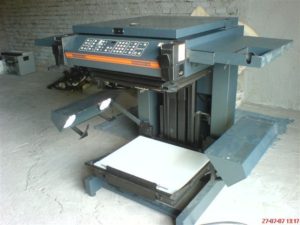
example of a stat camera
John: Yeah, we could smoke in the office then.
Dennis: So I guess the first interaction I had with you was “Oh, what’s in your case?” Because he had a tape case with him. And he opened it up and all the covers were hand-lettered and colored in. So all these tapes were immaculately labeled and colored in. And I think that the very first thing that I said, which is sort of ironic now in hindsight, was, “Echo and the Bunnymen? Who’s that?” But it was like, “Cocteau Twins. Who’s that? This Mortal Coil. Who’s that?” I didn’t know anything.
Melissa: So you thought Dennis was a total dummy. Not knowing anything.
John: Yeah. At first. But as soon as he brought in his tapes—he actually turned me on to a lot of things that I had sort of snubbed my nose to. Like The Smiths. And The Beatles. One of my favorite tapes that I ever received was that Beatles mix that you did for me.
Dennis: Glad that I could reciprocate.
John: R.E.M. I completely had written them off. And he got me in to them.
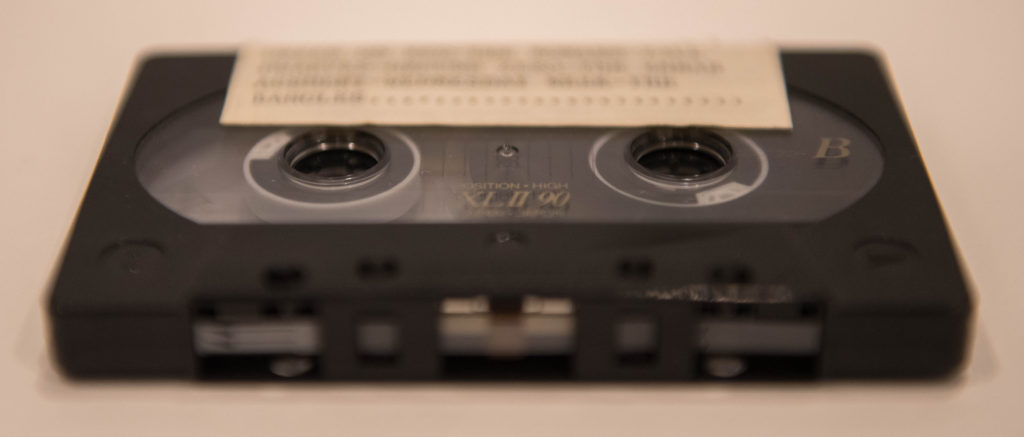
Sarah: I want to hear about the tape case. What was that tape case, and why did you have it at work with you?
John: Oh! Well, when I started working there. This was back in ’83 or ’84. It was a bunch of little old ladies cutting things out with scissors, not even using the exacto knives. And it was AM radio around the corner. I could run circles around these women as far as doing graphic arts. And I did. And I think when it got to the point where I was doing about 70 percent of the workload, I decided it was time for me to be in charge of the music. I brought in a boom box. And a decent-sized one, too. That’s when the tapes started. I started bringing in my case every day. And as those little old ladies got retired, dead, or just gave up, I started saying, “Hey, I know people.” So I got them to hire my sister, and I got them to hire my friend who was my boss but who had absolutely no experience in the job. I trained him. Then he became my boss. And my friends from high school [were hired]. And it just kept rolling. And then the friends that I hired would bring in their friends. And everybody ended up bringing in their case of tapes, every day. And we would take turns in the rotation. So, my turn to play a tape and then your turn to play a tape and then your turn to play a tape and then your turn to play a tape. And that’s how the workday went.
Dennis: And we all bitched about each other’s tapes.
John: Nonstop! [laughter]
Dennis: There was a point when our friend was really in to 10,000 Maniacs and Edie Brickell. So she brought in the Edie Brickell record. And I still remember this. And it was like a Saturday and she was playing the Edie Brickell tape. And I ended up going over and stopping. Ejecting. Handing it to her. And then putting in something else.
Melissa: That’s so mean.
Dennis: No, because [our other friend] was like, “Thank you!” That was before he was sleeping with her. That was the other thing, too. It was so incestuous in there.
Melissa: I feel like you’re describing summer camp or something.
Dennis: It was [like that]! The thing is- that job is still the funnest job I ever had because whenever we didn’t get our work done, John would just do it. [laughter] He’d be like, “Don’t worry about it. I’ll take care of this.” But that was usually after like a 12-pack of Milwaukee’s Best while sitting in his truck listening to more tapes.
John: That’s true. Yeah, but we were only paid like $5 an hour to do this crap. We stretched it as best as we could. But we had a lot of fun. I think we were really more focused on listening to the music than on doing the work.
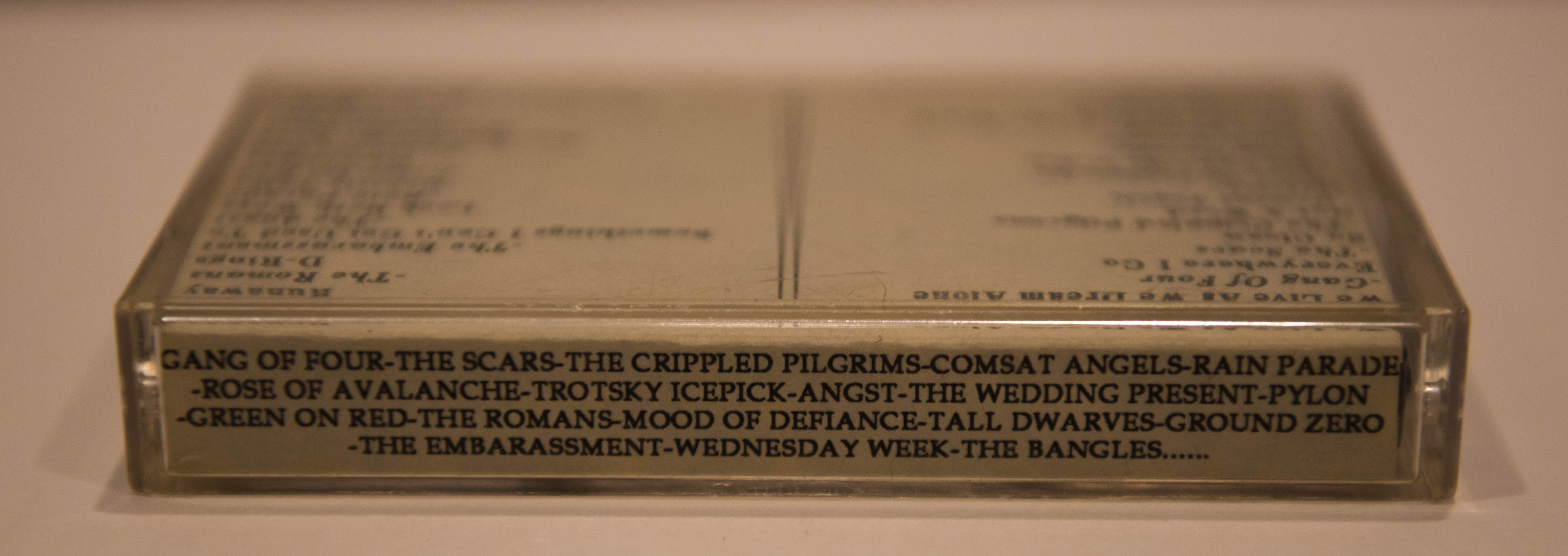
tape from john to dennis
Dennis: But there was also Cliff who was there, who made the 4AD tape for me that I showed you. So he would bring in his tapes, too. But he was always sort of like– Joy Division, Bauhaus—he was really big in to Bauhaus at that time. And super darker gothy stuff. That was him. He was a real dour sort of guy. He was kind of like a nazi, really.
John: Well he was a drummer. And he spent many years in marching drum bands and drum corps and all that. Those guys get like that. Either they get totally nuts or—he was kind of like Neil Peart. [laughter]
Sarah: Do you remember deciding to make a tape for Dennis?
John: I made many tapes for Dennis. That’s what I’m really curious about is what tape we are talking about here.
Dennis: You made so many tapes, but [my ex-girlfriend] ended up with half of them.
So I made that cover when I was working at Kinko’s and learning Photoshop 3.
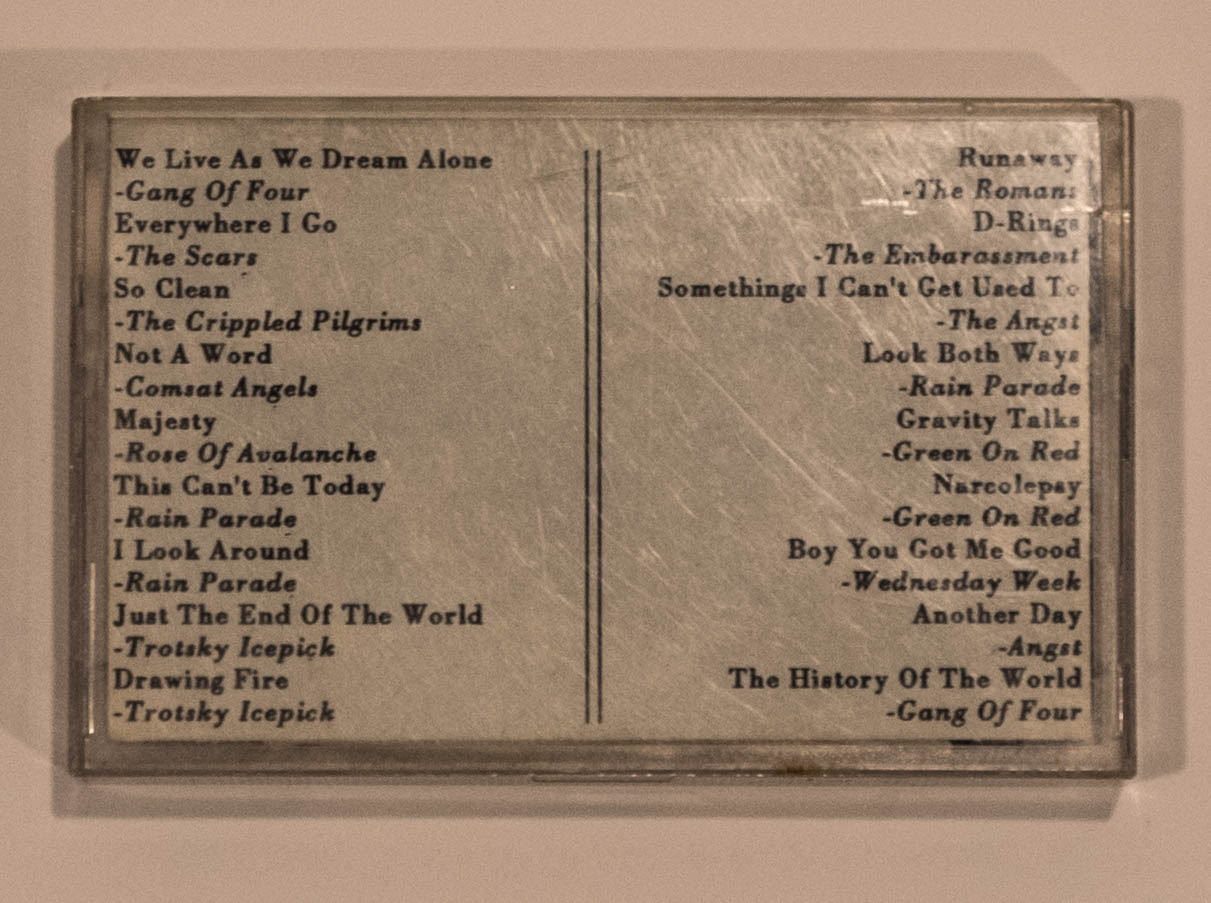
Sarah: Did it come with a cover originally?
Dennis: Probably. John was meticulous with his covers. He made sure that there were no abbreviations. The foldout flap—that was always used even if there were only three songs on there. And then I would ask him, “Oh, what record did that come off of?” And then when I would go on my album-buying rounds, which always started at Yesterday and Today in Rockville [Maryland] and worked my way down to Olson’s in Alexandria [Virginia], I would look for those records. And I still have a bunch of those records from that time.
It’s a pretty crazy mix, but it’s a good one.
Sarah: Was this the first one he made you? Do you know?
Dennis: I couldn’t even tell you what the first one was, but it was probably a Cure mix. Because I knew a couple of the hits.
John: And Echo and the Bunnymen, early, too.
Dennis: Yeah, that was probably the first one, an Echo and the Bunnymen mix. It took a few years but then [Echo and the Bunnymen] obviously became my life for way too long. But around this time is when [The Cure’s] Disintegration came out. And John played it incessantly. I remember John going on and on about how awesome that record is, and now that record is in my DNA, as I’m sure it is in yours from listening to it a million times.
John: Plus, there was a good 7 months when there was just the Fascination Street single that I 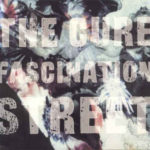 had gotten. And I recorded that and the B-sides, and we listened to that over and over. When it was my turn [to choose a tape to listen to], that’s what we were listening to.
had gotten. And I recorded that and the B-sides, and we listened to that over and over. When it was my turn [to choose a tape to listen to], that’s what we were listening to.
Sarah: Do you remember, Dennis- did you ask John for a tape? Or did John just start volunteering: “Hey I think you might like this!”?
Dennis: Both. Probably a little bit of both.
John: It was kind of the culture back then. I mean, through high school, anybody you met—it was kind of like how you got to know people was you made tapes for each other.
Dennis: And you judged somebody by their taste in music. [laughter]
John: Yes.
Dennis: We used to have these lists over by the waxer—
Sarah: What’s the waxer?
Dennis: It’s where you put either a half-tone photo or printed out text.
John: All the type and everything had to go onto the page, and we ran it through waxers to get everything to stick to the page.
Dennis: Yeah, that’s why they call it a “paste-up.”
John: There were hot waxers with a big vat that had a temperature control on it. You would turn it on in the morning and it would heat up the wax. And it had rollers. And you’d feed the sheets of paper through to get a little coat of wax on the back of them. And it sucked when you got that wax on your tapes. [laughter] It would get on everything because it would be on your fingers all day when you were working. And everything you touched would just get a little waxy. [laughter]
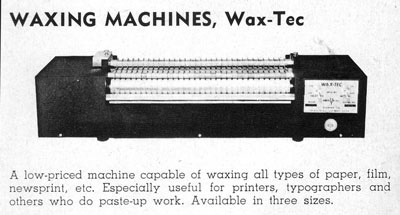
Dennis: But John would put up these lists of like “Best albums ever” or “Best Siouxsie record” you know. And then we would get in fights about it. “Tinderbox isn’t the best. Hyena is the best! Obviously!” [laughter]
Sarah: So it was like before Internet memes, you were basically doing Internet memes on the walls of the workplace.
John: Yep, we also did lists like “Songs with the word ‘love’ in them” or “Songs with the word ‘hate’ in them.”
Sarah: So Dennis, why did you pick this specific tape [to talk about]? What is it about this one that is special?
Dennis: Well I think that’s the only one I have left. Over the years, they disappear. Either I started using them for 4-track recording—
Sarah: You recorded over them?
Dennis: Maybe.
John: Emergencies happen.
Dennis: I definitely did it with comps that I made myself. But also, my ex ended up with 75 percent of my music, including the tapes, and she wouldn’t give them back. So I have this and I have that 4AD comp [made for me by someone else] and I think that’s it.
John: This is a really good one though. This has a lot of good stuff on it.
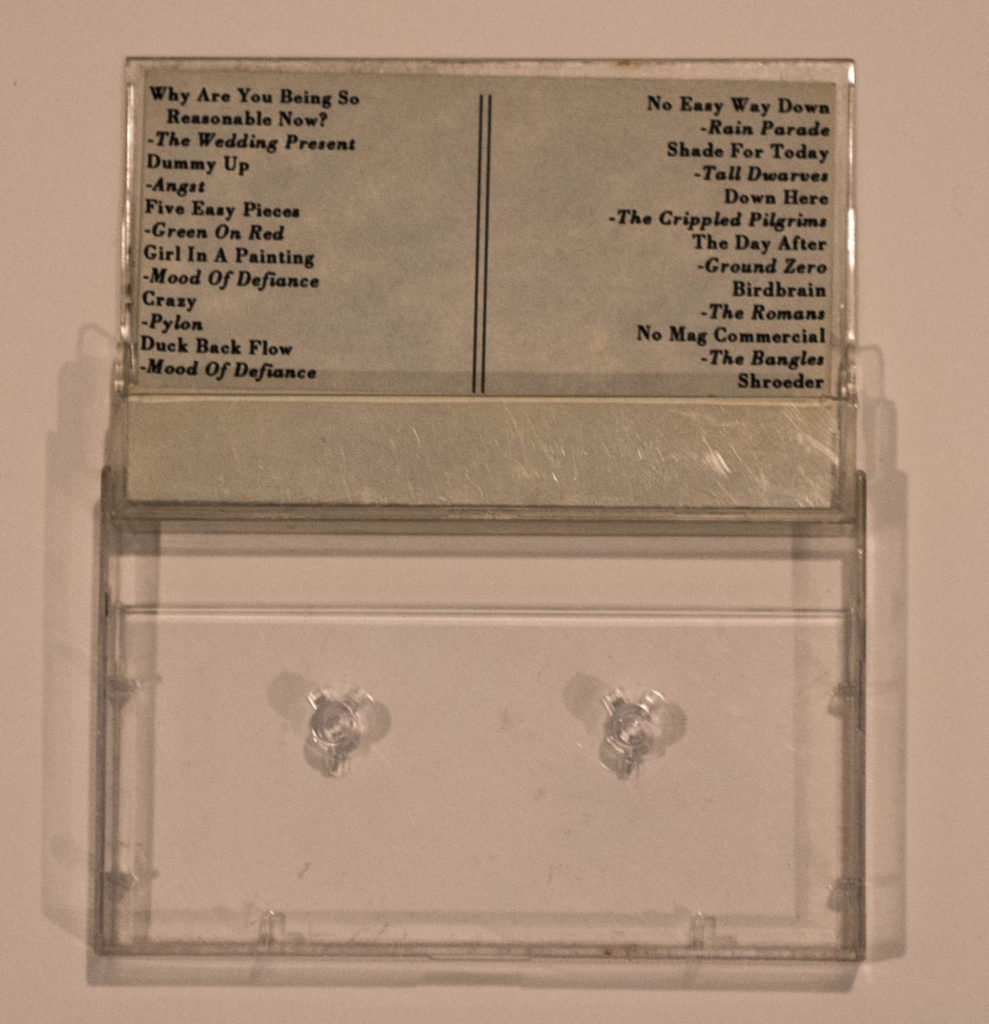
Sarah: Is there anything that particularly stands out to you about that one?
John: It’s really odd that I repeated groups so many times on this one. Normally, it would just be one song per group. But this one, I had one of those things where it’s just a collection of a few groups but it’s a number of songs by the same group. And I’m trying to remember what the pattern here was because I always had some kind of weird pattern. See how Gang of Four is at the beginning here and at the end here. And Angst is in between Rain Parade—
Sarah: Is it like a palindrome?
John: I did things like that- yeah.
Melissa: That’s clever. You end right where you started.
John: When all you do after you get home from work is sit around and play music and make tapes, you get creative with it! We got creative with it. I can’t remember the last time I did something like that.
Dennis: But I think this one started with me asking about the Paisley Underground. And John was like, “Oh I got all that shit.” And then it spiraled from there.
John: It’s weird that I mixed Comsat Angels into that though. But, it works! And had I known about the Chameleons back then, they would have been in there too.
Remember that tape case that I had? Remember I sold you that tape case?
Sarah: I think it’s funny that a tape case was a commodity during this period of time.
Dennis: They are again.
Sarah: They are? Was it one of the travel tape cases with the strap and the zipper?
Dennis: No, it was like a brief case.
John: It was the brown one, right?
Dennis: Mm-hm.
John: After that I switched to- I bought a new paint box for my art class, and I switched to my old box, which was actually perfect because those old wooden paint boxes that flip up and they’re compartmentalized—cassette tapes fit perfectly in them. And you could section them.
Sarah: So you’d split them up by genre in your case?
John: O yeah. Plus you could fit a good ten more cassettes in that than you could in one of those regular cassette cases.
Dennis: I had two like that. One for tapes and one for art supplies. And the one for tapes didn’t have a handle on it, so I’d have to, like, carry it under my arm. [laughter]
Sarah: So I have a question for John. You were making these tapes for Dennis. Who else were you making tapes for in the office at that time?
John: Everyone I knew.
Sarah: Do you remember it waning?
John: Yeah, when cds came out. That was really when it started. But at that point I became obsessed with making mix cds. And the tapes were actually just gone to the wayside. They were hard to find. They just weren’t out there anymore, or at least the decent quality ones. The—
John and Dennis in unison: Maxell XL-IIs.
John: They held out forever.
Dennis: They still play as perfectly.
John: The TDK D-90s lasted a long time, too.
Dennis: The Memorex though—the ones with the yellow and blue squares on them. Crap. Especially the 120 minutes ones. You might get one play out of them.
I remember with Memorex and Maxell, you could go to People’s Drug and buy your tapes. And then you couldn’t find them anymore, so you had to get them from Maxie Waxie’s or The Wiz or something. And then they stopped carrying them. And then at that point everybody had CDs.
John: Yeah, the only place to still get them was at Costco and places like that. Sam’s Club.
Dennis: Yeah but “Kirkland tapes” just doesn’t do it. [laughter] Do you have any more questions?
Sarah: I was hoping one of you could give a description of the newspaper. Does it still exist?
John: Yeah. I’ve gone back to working for them.
Sarah: You currently work there?
John: Shamefully, yes. They’re paying me slightly less than I made when I worked there in ’99. But I do get to work from home, so that’s decent.
Sarah: So is the layout being done differently now than when-?
John: O yeah, it’s all computer. We’re actually using InDesign. Surprisingly. After all these years. And they just two years ago gave the layout of editorial back to us. Because Editorial was doing it for the past twenty years. They just sort of cut our jobs and our department away because that’s what we used to do. We built the ads but we also layed out all the pages. Twenty years ago they decided that we were too stupid to learn computers and they gave our jobs away to the editors. So they finally gave that back to us. Which is a good thing.
Sarah: Are there other folks working there that were there back in the days when Dennis was working there?
John: My sister is actually still there. But we’re not anywhere because we’re actually at home now.
Sarah: Ah. “There” means something different.
John: The last company that bought us—the previous owner was Jeff Bezos. Because we were owned by the Washington Post. And when he bought the Washington Post, he also got us.
Sarah: Do you have parting thoughts or parting reflections on this time period?
John: I’ve heard rumors that tape culture is coming back. But I haven’t really investigated. I’m kind of psyched to make a mix tape right now! But I’m not sure how I’d go about it. Actually, I do still have a really nice Sony tape-to-tape that I’ve barely touched.
Sarah: Does your tape-to-tape still work?
John: O yeah, I had bought it brand new at a discount probably 15 years ago and it’s been traveling around with me. I kinda couldn’t get rid of it because I still have a lot of old band jam tapes and things like that I plan to eventually digitize. So it’s nice to have one of those. But I don’t have a receiver…I have a USB turntable. And if I can figure out a way to get the tape deck into the computer—I’m sure there’s a way.
Dennis: Yeah, and then you’ll just make a mix tape in your computer. [laughter]
Sarah: Oh no!
Dennis: Well that’s just it, isn’t it? I think the tape culture could only have existed then because it was the only way you could do it. It was the only portable medium at the time. And all your other stuff was on vinyl, so once it became easier, especially making mix tapes from cds, it was just sort of like “What’s the point?”
John: Yeah, that’s actually what inspired me to get more into dee jaying. Because once that tape culture died, it was like [sigh].
Dennis: But dee jaying is sort of like making a mix tape.
John: Yeah. It’s very much like it. It was training for it.
Dennis: When you only have 30 seconds left of your night, you know what you’re going to play. That was the best part—trying to figure out how long you have for each song. And then maybe you have that one minute at the end, and you know what song you’re going to put on there.
John: A lot of times I did pre-mapping.
Dennis: Oh I always did!
Sarah: Pre-mapping?
John: Yeah. Lay out/time out what’s going to be on there to make sure that it fits with no extra space because you wanted to use every last second. So you sat there with the calculator and you added that shit up. [laughter] You made sure you filled every last second.
Dennis: Unless it was for an on-air dee-jay, they didn’t have times on a lot of records. So you had to sit there with a watch or the clock. Or I used the read-out on my tape deck. If I knew that at 18:53 it was going to be cut off, then I always knew how much time I had. But the best part was- aside from figuring out how much time you had- was what order to put [songs] in and where you were going to go with this thing, which was the fun.
John: And there were different styles, too. You could do the pre-map thing, where you lay it all out. Or you just go freeform. Cross your fingers. See where it goes.
Dennis: And then, [our coworker], he was a musician so he always had gear. He would take either a tape or vinyl, put it through a mixer, and then add reverb to it, and then mix them together, and then fade in or fade out. So it was like a super pro-style mix tape.
John: A lot of my later mix tapes, I used to do that, too, when I had the dual cassette deck. You could take and mix and fade one song over the next, which was a pain but it was worth it.
Dennis: It was totally worth it. Although there is something to be said about missing the last half second of the reverb tail, and then a new song comes in—
John: Like taking Bauhaus Ziggy Stardust, and that last note is the same note as the beginning of Dark Entries. If you can get them right on, it’s just seamless.
Dennis: But that’s all the stupid shit that you keep from that time. It’s so good.
John: Those were the days. [laughter]
Dennis Kane is a musician and jack-of-all-trades audio guy; formerly the sound guy at the Black Cat in DC, perennial recording engineer (Ex Hex, Benjy Ferree, etc…) and lately, sound designer/audio engineer @ nat geo. He’s currently part of the duo, Domingues and Kane, and does a solo guitar thing, as well. Aside from music, DK’s a devoted horror movie fanatic, and avid cat lover and is married to the most amazing person in the world (hi, Melissa!), so he’s got that going for him.
https://denniskanemusic.com http://www.dominguesandkane.com
John Savia is a graphic artist and semi-retired DJ who still haunts the Philly Goth scene on occasion as DJ Johnnybats.

John and Dennis
